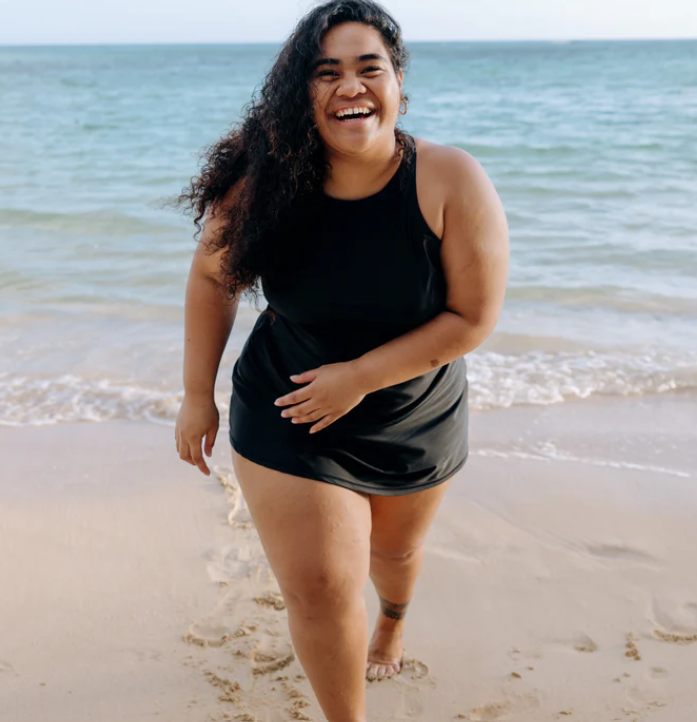
What is the UV index?
The ultraviolet index (UVI) is a measure of the level of UV radiation at a given time. Values of the UV index vary from 0, indicating no risk, to 11+, which signifies extreme risk of harm from unprotected sun exposure. A higher UVI means the intensity of UV radiation from the sun is stronger, and that sun damage will occur faster, emphasizing the importance of protective measures in high UV conditions.
Quick links:
What is the highest UVI in the world?
How can I stay safe in the sun?
Check the hourly ultraviolet radiation forecast to stay informed with our UV monitoring tool! Just enter your zip code, or city and state, and see the UV radiation level for your locale.
UV index scale
The UV index scale offers a standard measurement of UV intensity and its risk.

Image source: https://www.epa.gov/enviro/uv-index-overview
The sun provides essential warmth and light, but its ultraviolet (UV) radiation can also be harmful. The ozone layer helps filter this radiation, but factors such as ozone depletion, season, and the weather influence the amount reaching Earth.
Here's what you need to know about the UV index, a valuable tool to understand UV risk and protect yourself:
UV index range
The UV index scale runs from 1 to 11+, with each successive number representing a higher risk of overexposure.
- 0-2 (Low): minimal risk of sunburn or skin damage.
- 3-5 (Moderate): moderate risk of burning.
- 6-7 (High): high probability of burns and some photodamage.
- 8-10 (Very high): very high chances of painful burns and lasting cell deterioration.
- 11+ (Extreme): exceptionally high dangers of burns and permanent photodamage, which can lead to melanoma.
Protection recommendations
Here are some of our protective clothing recommendations for different UV index levels:
|
Level |
Recommendations |
|
Low (0-2) |
Sunglasses and sun hats are recommended. Use sunscreen if outside for an extended period of time. |
|
Moderate (3-5) |
Seek shade near midday, wear protective clothing (e.g., long sleeves, pants), a wide-brimmed hat, and sunglasses. Consider SPF 30+ sunscreen for fair skin. |
|
High (6-7) |
Minimize sun exposure near midday, wear SPF 50 sunscreen on exposed skin, sun protective swimwear, a wide-brimmed hat, and sunglasses. |
|
Very High (8-10) |
Minimize unprotected sun exposure mid-afternoon, wear SPF 50+ sunscreen on exposed skin, protective clothing, a wide-brimmed hat, and sunglasses. Consider seeking shade or staying indoors at peak UV hours. |
|
Extreme (11+) |
Avoid prolonged sun exposure, wear SPF 70+ sunscreen on exposed skin, protective clothing, a wide-brimmed hat, and sunglasses. Seek shade or stay indoors as much as possible. |
The UV index scale provides a handy guide to assess daily risk levels from the sun's UV radiation. Proper protection according to the expected UV intensity can reduce the chances of painful sunburns and long-term skin damage that can lead to skin cancer. The scale helps recommend protective measures to take at each severity level.
How is the UV index calculated?
The UV index is calculated using a complex formula that factors the intensity of UV radiation reaching the earth's surface. Scientists and environmental agencies closely monitor these variables to model and forecast the next day's expected UV levels.
- Ozone layer thickness
- Cloud cover
- Sun angle
- Ground albedo (ability of a surface to reflect sunlight)
All these individual calculations are combined, and the final UV index value is obtained. This value is typically reported as a whole number between 0 and 11+, with higher numbers indicating a greater risk of sun damage.
What factors influence UV index levels?
The factors that influence UV levels are the same ones that scientists use to calculate the UV index. Let’s go into each of these in more detail.
Ozone layer density
The ozone layer in the stratosphere plays a crucial protective role, absorbing over 90% of ultraviolet radiation from the sun. As ozone gets depleted by pollutants, more UV rays can penetrate and reach ground level.
Scientists actively monitor fluctuating ozone concentration to model this effect on next-day index values. A thinner ozone layer means higher index numbers. Weather agencies gather these stratospheric measurements via satellite instrumentation, inputting current ozone loss data into the UV index formula.
Cloud cover
Clouds act as natural obstructions, preventing UV rays from reaching the ground. Meteorologists feed detailed cloud cover projections into index calculators. An overcast day has lower UV than a clear day.
Altitude and latitude
Higher elevations and proximity to the equator expose locations to more direct UV radiation, leading to intensity upticks. Denver Colorado, at an altitude of over a mile high, receives more intense radiation than New Orleans, which sits at sea level. index values also rise as you move southwards closer to the equator, as the sun hits surfaces more directly year-round.
Sun angle
The height of the sun in the sky directly impacts surface exposure at a given spot. As the angle increases in summer months, incoming UV rays hit ground level more directly, meaning higher index values. Local longitude and latitude help determine this angle-of-incidence calculation.
Ground reflection
Some surfaces like snow or white sand reflect over 80% of UV rays, effectively doubling UV exposure. Other terrain like grass, soil, or water may reflect less than 10%. Index algorithms factor ground-reflected UV to capture this variability based on geography. A fresh snowfall can spike the index numbers.
Pollution and particulates
Air pollution containing fine particles can both absorb and scatter incoming UV rays. Very high pollution days may lower the index slightly, while hazy days still allow plenty of direct radiation through the particulate layer. Pollution’s impact on UV index models remains an evolving, complex area of index science.
What are the different types of UV radiation?
There are three main types of UV radiation:
- UVA rays make up the majority of the UV radiation that reaches the Earth's surface. They can penetrate deep into the skin and are linked to skin aging and wrinkling, but also skin cancer.
- UVB rays do not penetrate as deeply as UVA but are the primary cause of sunburns and skin redness. They can cause DNA damage in skin cells, leading to cancer.
- UVC rays have the most energy of the three types but are entirely absorbed by the ozone layer and do not reach ground level. UVC rays from artificial sources are used to sterilize equipment.
What is the normal UV index?
There is no “normal” UV index. Ultraviolet levels are constantly in flux. . Instead of one static number, think of the UV index as a dynamic range influenced by a complex variability:
- Seasonal shifts. UV radiation reaching ground level changes substantially depending on the time of year. The sun is lower in the winter sky, causing a 2-3 point difference in its position compared to the summer averages.
- Geographic differences. The index baseline also shifts across latitudes and altitudes as exposure circumstances change. Places like Florida regularly experience a normal index of 6-8 year-round, while Alaska may register summer peaks of only 3-5, and wintertime norms barely above 1.
- Atmospheric dynamics. The atmosphere changes how much UV light gets through. A thinner ozone layer lets more rays pass or clouds block rays. Reflection from the earth’s surfaces can increase radiation exposure. Even pollution and air particles influence UV levels.
What is the highest UV index in the world?
The highest UV index ever recorded was 43.3 in Bolivia on December 29, 2003, at the Licancabur volcano. This extreme UV level poses an extreme risk of harm from unprotected sun exposure.
Typically, the highest UV levels in the world occur in tropical countries and high elevations.
Some geographic areas known for reaching extreme UV indexes are:
- The Chilean, Argentinean, and Bolivian Altiplano regions of South America, with altitudes over 12,000 feet. UV indexes here routinely exceed 20 during the summer months.
- Sub-Saharan Africa, especially in Namibia, due to altitude and proximity to the equator. UV levels frequently exceed 15 during peak daily hours.
- Parts of Australia have intense UV radiation due to the thinning ozone layer above the continent. Some areas in Australia average peak UV levels over 12 every day during the summer.
- Equatorial high mountain elevations such as those in Kenya, Indonesia, and Ecuador also regularly reach UV indexes of 14 or higher around midday.
People traveling to high-risk areas when the sun is most intense should take precautions against excessive UV exposure by wearing protective clothing, limiting midday hours outside, and applying sunscreen. Extended periods of unprotected skin exposure in these areas can quickly lead to sunburn, long-term skin damage, and skin cancer.
SwimZip is your partner in effective UV protection
Protect yourself from the dangers of sun exposure with our line of sun hats, UPF 50 swimsuits, and swim dresses. Reduce the risk of permanent skin damage, and look fantastic while you’re at it.
We offer a wide range of sun protective swimwear, including one-piece suits, swim bottoms and tops, rash guards, and more.
For additional UPF 50+ clothing, check out our sister apparel brand, Shēdo Lane!
UV index FAQ
What is a good UV rating for sunscreen?
A good UV rating for sunscreen is a broad-spectrum SPF of 30 or higher. This protects against both UVA and UVB rays, which can cause skin damage and increase the skin cancer risk.
At what UV index should I wear sunscreen?
You should always wear sunscreen whenever the UV index is 3 or higher, regardless of the weather. A UV index of 3 means a moderate risk of harm from sun exposure without protection. Remember that clouds do not fully block UV rays.
Can I tan in UV 4?
You can get a tan in UV index 4 conditions. A UV index of 4 means high-intensity sunlight, so limit exposure to an hour and use SPF 30 sunscreen to prevent burning.
Is SPF 70 too much?
SPF 70 is not too much. The higher the SPF rating on sunscreen, the more UVB ray protection it offers. Maxing out above 50 is beneficial for very sun-sensitive skin.
How do I choose a sunscreen?
These are the factors you should consider when choosing a sunscreen:
- Skin type. Fair skin needs higher SPF.
- Activity. Water-resistant formulas are best for swimming or sweating.
- Personal preference. Choose a format (lotion, spray, gel) that feels comfortable for you.
- Label. Ensure it's broad-spectrum sunscreen and SPF 30 or higher.
What UV index will give you a sunburn?
A UV index of 3-7 presents a moderate to high risk of sunburn, especially for fair-skinned people, who may burn in less than 10 minutes without proper sun protection. The risk increases with higher UV index values.
Is 2 hours in the sun too much?
Two hours in the sun can be too much without protection, especially when the UV index is 3 or above. It's important to apply sunscreen, seek shade, and wear protective clothing to minimize skin damage.
What country has the least UV radiation?
The country with the lowest UV radiation levels is Iceland. Due to its far northern location, Iceland experiences significantly lower UV radiation than most other countries. Its average annual UV index falls within the moderate to low range (3-5), with peak summer months rarely exceeding 7. Iceland's latitude results in the sun being at a lower angle in the sky throughout the year, reducing the intensity of UV rays reaching the ground.
How long do you have to lay out to tan?
Some people will tan in as little as 10 minutes if they’re not wearing sunscreen with SPF. The timeline depends on things like sin type, amount of melanin, intensity of sunlight, time of day, and geographic location.
Exposing your skin to UV radiation, regardless of the length of time, carries significant risks associated with sunburn, premature aging, and even skin cancer. These risks increase with excessive exposure and higher UV index levels.
Medical experts from the CDC, American Academy of Dermatology, and Skin Cancer Foundation unanimously advise against deliberately trying to tan or laying out in the sun due to the significant health risks involved, including skin cancer and premature aging of skin.
If you choose to tan, it's crucial to understand that the time it takes to tan varies based on several factors, including your skin type and the intensity of the sun's UV rays.
Check out our article on the best UV index for tanning. It has safety tips and a lot of great info about reducing risk while you get that golden tan.
Who has the most exposure to UV radiation?
Outdoor workers tend to have the highest exposure to UV radiation. For example, construction workers, landscapers, agriculture workers, and road crews often spend long hours working under direct sunlight with limited shade options. A lifeguard, both on land and in reflective water, would experience significant UV exposure.
What type of skin is more prone to skin damage?
Those with fair skin that burns easily have a much higher risk of sun damage compared to those with darker skin. Pale pigments have less protective melanin—often of Northern European, Celtic, or red-haired descent—and are the most prone to skin damage. In contrast, swarthier skin tones (Hispanic, African, Middle Eastern, or South Asian) have more melanin to block UV rays and resist burning.
Helpful information
What are the symptoms of sun poisoning?
UPF vs SPF: what is the difference?
Resources
Dangers of indoor tanning. (2023, September 22). American Academy of Dermatology. Retrieved February 13, 2024, from https://www.aad.org/public/diseases/skin-cancer/awareness/dangers-tanning



Leave a comment
This site is protected by hCaptcha and the hCaptcha Privacy Policy and Terms of Service apply.